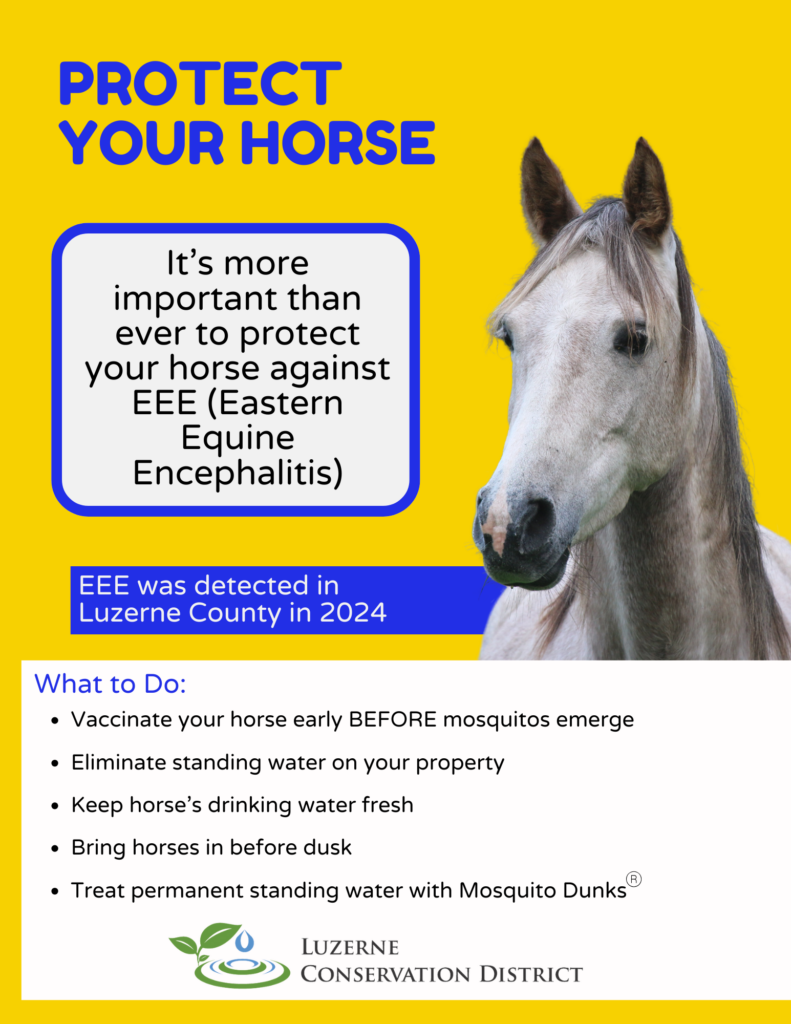Eastern Equine Encephalitis Detected in Wild Turkey in Luzerne County
Late last year, Eastern Equine Encephalitis (EEE) was detected in a wild turkey in Luzerne County, PA. EEE is a rare, but dangerous mosquito-borne disease that has historic presence in the northeast region of Pennsylvania and throughout the eastern United States. EEE has not been detected in Luzerne County since 2019. The Luzerne Conservation District’s Mosquito-borne Disease Control Program staff will increase mosquito surveillance and control in the area where EEE was detected.
EEE is spread from the bite of an infected mosquito. The CDC estimates that approximately 4-5% of human eastern equine encephalitis virus infections develop the severe disease, eastern equine encephalitis. Of those who develop severe disease, approximately 30% die; and those that survive often have ongoing neurological problems. Symptoms of eastern equine encephalitis include fever, headache, vomiting, diarrhea, seizures, behavioral changes, and drowsiness. There are no vaccines or medications for treatment for humans, so the best preventative measure is to reduce exposure to mosquito bites. This can be done by applying EPA approved insect repellents, wearing long-sleeved shirts and pants, maintaining window screens, and eliminating standing water mosquito habitat around your house. If standing water cannot be eliminated on your property, products like “Mosquito Dunks®” can be used to control mosquito larvae before they can emerge as biting adults.
Horses are exceptionally vulnerable to EEE, with up to 90% of infected horses dying from the disease, according to the UC Davis Center for Equine Health. In 2024, a horse died from EEE in Lackawanna County, PA. Dr. Cunfer, large animal veterinarian at Cunfer Veterinary Services, Lehighton, offered the following recommendations to horse owners: “While Eastern Equine Encephalitis is not to be taken lightly, there are several things horse owners can do to make EEE less of a threat. The best prevention for any mosquito borne disease, like EEE, is utilization of appropriate vaccines, along with annual boosters. The next best management is addressing environmental concerns, especially focusing on removing the mosquitos’ breeding areas. These include things like avoiding stagnant or standing water around the property. Drinking water should be kept fresh, ponds and streams should be allowed to flow freely, and horses should be removed from swampy or marshy areas of pasture. Try to make sure your barns and pastures are well drained and remove any items that could hold water – old buckets, tires, etc. If you have specific questions or concerns, it’s best to contact your regular veterinarian.”
